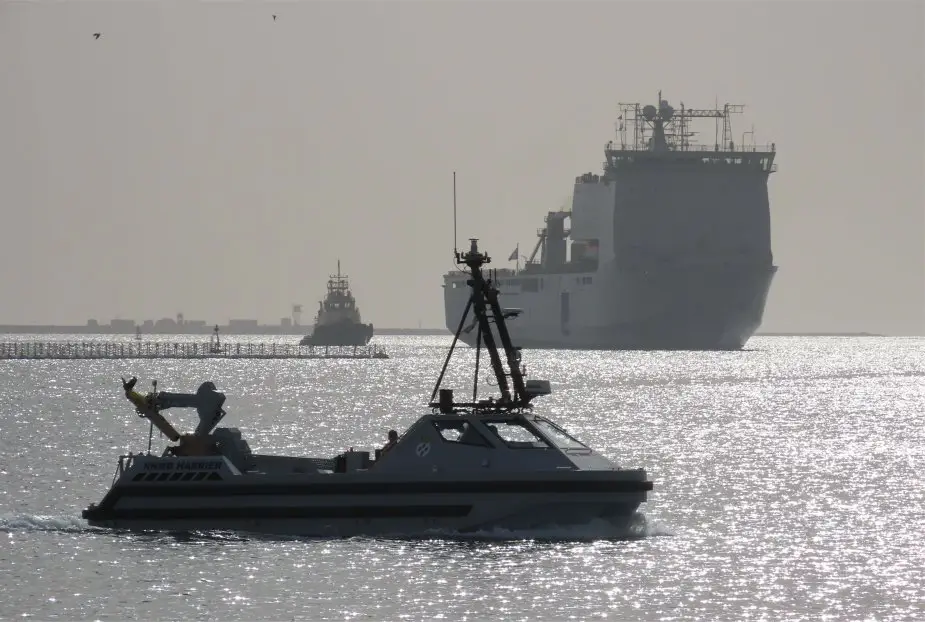Breaking news
UK: Royal Navy's Harrier Autonomous MCM vessel will be used in the Gulf.
According to information published by the UK MoD on February 14, 2023, an uncrewed boat that can search for and detect underwater threats has arrived in the Gulf, in an important step towards autonomous mine-hunting operations, and a demonstration of the UK’s continued commitment to the Middle East.
Follow Navy Recognition on Google News at this link
 RMNB Harrier Autonomous MCM vessel and RFA Cardigan Bay. (Picture source: UK MoD)
RMNB Harrier Autonomous MCM vessel and RFA Cardigan Bay. (Picture source: UK MoD)
Royal Navy Motor Boat Harrier is part of the ten-year program for replacing the Navy’s current fleet of mine countermeasure vessels and her time in the region will lay the foundation for future autonomous kit.
While deployed for operations, the 11-meter boat will work with host ship RFA Cardigan Bay to conduct a series of demonstrations and trials that will prove her ability to operate in the harsh and demanding weather conditions of the Gulf.
Harrier is capable of operating both autonomously (pre-programmed to conduct a mission) or remotely from a ship or shore-based remote control centre. She tows a side-scan sonar behind her to look for mines on the seabed, alerting units ashore or at sea of their whereabouts. In the future, she will also work with remotely operated underwater vehicles and a minesweeping system.
The tests will be key for seeing how the Atlas remote-controlled mine sweeper boat deals with hot climates, having already proved her ability in UK waters. She will face water temperatures of more than 30C in the summer, very different from her previous home of Faslane.
Harrier will be put through her paces on integrating with Royal Navy personnel and units in the region – mine countermeasure battlestaff, the UK’s Naval Support Facility in Bahrain, and countries who work with the UK, protecting shipping and the freedom of navigation.
About the RMNB Harrier
The RNMB Harrier can be operated in three modes - manually, remotely, and autonomously - which provides significant flexibility to deploy either Towed Side Scan Sonar systems or Autonomous Underwater Vehicles to accurately survey the seabed and detect the presence of mines and other underwater threats.




























